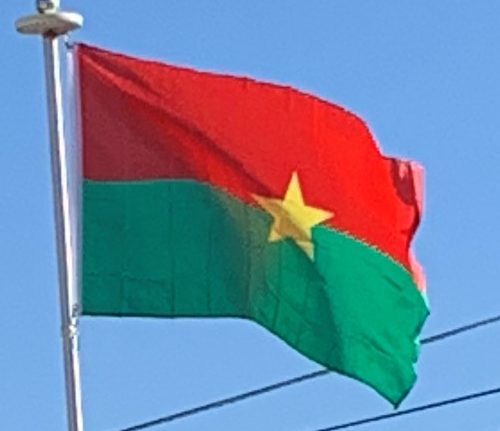The top five export commodities in 2017 were as follows, in order of importance: gems, precious metals, US$1.9 billion (78.5% of total exports), cotton, $198.7 million (8.3%), ores, slag, ash, $137.6 million (5.8%), fruits, nuts: $76.6 million (3.2%) and oil seeds: $59.5 million (2.5%).
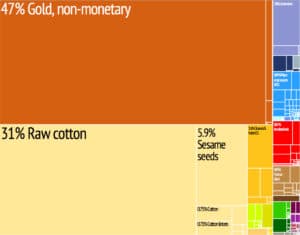
In 2018, tourism was almost non-existent in large parts of the country. The U.S. government (and others) warn their citizens not to travel into large parts of Burkina Fasino: “The northern Sahel border region shared with Mali and Niger due to crime and terrorism. The provinces of Kmoandjari, Tapoa, Kompienga, and Gourma in East Region due to crime and terrorism”.
There is mining of copper, iron, manganese, gold, cassiterite (tin ore), and phosphates. These operations provide employment and generate international aid. Gold production increased 32% in 2011 at six gold mine sites, making Burkina Faso the fourth-largest gold producer in Africa, after South Africa, Mali and Ghana.
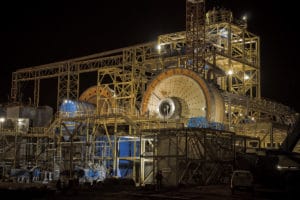
A 2018 report indicated that the country expected record 55 tonnes of gold in that year, a two-thirds increase over 2013. According to Oumarou Idani, there is a more important issue. “We have to diversify production. We mostly only produce gold, but we have huge potential in manganese, zinc, lead, copper, nickel and limestone”.
Transportation:
Transport in Burkina Faso is limited by relatively underdeveloped infrastructure.
As of June 2014 the main international airport, Ouagadougou Airport, had regularly scheduled flights to many destinations in West Africa as well as Paris, Brussels and Istanbul. The other international airport, Bobo Dioulasso Airport, has flights to Ouagadougou and Abidjan.
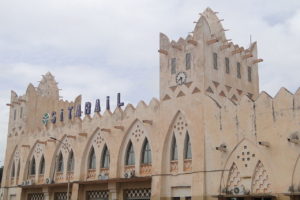
Rail transport in Burkina Faso consists of a single line which runs from Kaya to Abidjan in Ivory Coast via Ouagadougou, Koudougou, Bobo Dioulasso and Banfora. Sitarail operates a passenger train three times a week along the route.
There are 15,000 kilometres of roads in Burkina Faso, of which 2,500 kilometres are paved.
Flag of Burkina Faso:
The national flag of Burkina Faso is formed by two equal horizontal bands of red (top) and green, with a yellow five-pointed star resting in the center. The flag was adopted on 4 August 1984. The flag is colored in the popular Pan-African colors of the Ethiopian flag, reflecting both a break with the country’s colonial past and its unity with other African ex-colonies. The red is also said to symbolize the revolution and the green the abundance of agricultural and natural riches. The yellow star placed over the red and green stripes is the guiding light of the revolution. The flag was adopted following the coup of 1983 which brought Thomas Sankara to power.
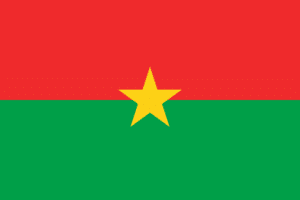
The original flag of Upper Volta, adopted at independence, contained three horizontal stripes of black, white, and red. These colors represented the three major tributaries of the Volta River, which flows south through the country: the Black Volta, the White Volta and the Red Volta. It is similar to the tricolor flag used by the German Empire from 1871 to 1918. The flag was changed when Upper Volta became Burkina Faso on 4 August 1984.
